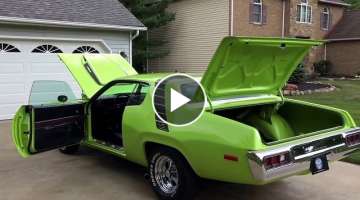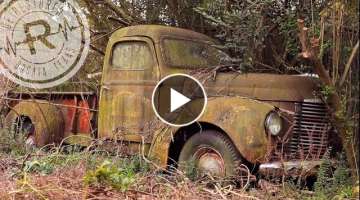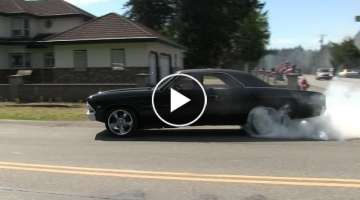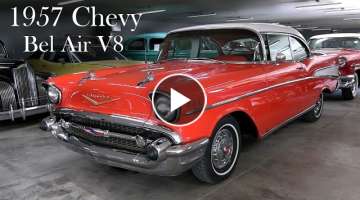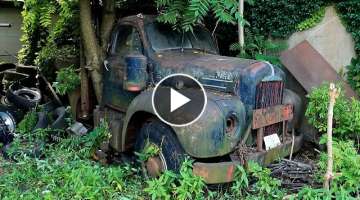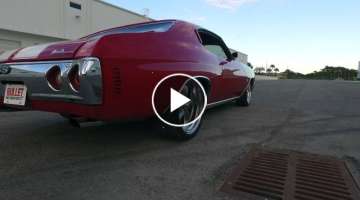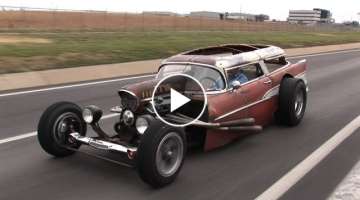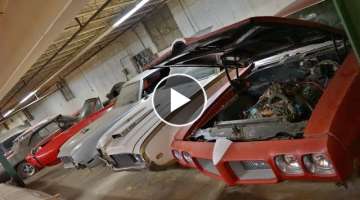1955 Chevrolet Bel Air Restoration Project
The full-sized Chevy Bel Air received all-new styling and new V-8 power for 1955. It was 15 feet long, and lower than most other vehicles on the road, with a sleek Sweep Sight wrap-around windshield. The wheelbase remained unchanged at 115 inches, and the overall design was tasteful and balanced for the day. Called the 'Hot One' in GM's advertising campaign, Chevrolet's styling was trendy and crisp, with an egg-crate grille, hooded headlamps, chrome spears on the front fenders, stainless steel window moldings, and full wheel covers. New features for 1955 included the 12-volt electrical system, improved brakes, and the Glide Ride suspension system. A new two-door wagon was added to the body style list, called the Bel Air Nomad, with a unique hardtop roofline.
Motor Trend magazine gave the Bel Air top marks for ride and handling, and Popular Mechanics reported acceleration for the V-8 Bel Air as being 0-60 MPH in 12.9 seconds, a tremendous accomplishment for a 3,300 lb. car.
1955 Bel Air body styles included a two-door, six-passenger sedan priced at $1,670, a four-door sedan at $1,930, a two-door hardtop at $2,065, a convertible at $2,200, and a six-passenger station wagon at $2,260. The two-door, six-passenger Nomad listed at $2,470. The addition of the eight-cylinder engine boosted the factory base price by approximately $100. The most popular body style on the Bel Air line was the sedan with 345,372 examples produced. The second most popular 1955 Chevrolet body style was the Two-Ten sedan which had 317,724 examples built.
Chevrolet produced 168,313 examples of the two-door Bel Air sedan and 185,562 of the Bel Air hardtop. A total of 41,292 examples were Bel Air convertibles, 24,313 were station wagons, and 6,103 were Nomad Wagons.
1955 Chevrolet Models
Chevrolet's 1955 model lineup included the two-door Corvette, the 'entry-level' One-Fifty, the mid-priced Two-Ten, and the top-of-the-line Bel Air. Prices on the One-Fifty ranged from $1,590 to $2,030 with six-cylinder power and $1,690 to $2,130 with the V-8. The Two-Ten added stainless steel around the windshield and backlight reveals, and chrome sidewall moldings. The interior was given a cigarette lighter, ash receptacles, assist straps, and armrests. Prices with six-cylinder power ranged from $1,635 to $2,130 while the V8-equipped Two-Tens listed for $1,675 to $2,230.
For 1955, Chevrolet offered the optional small block 162 horsepower V8 engine and most were paired with the three-speed Synchro-Mesh manual transmission, with a few choosing the optional overdrive. The new 265 cubic-inch Turbo Fire was developed in just 15 weeks. The base V8 had a two-barrel carburetor and was rated at 162 horsepower. The 'Power Pack' option featured a four-barrel carburetor and other upgrades bringing power to 180 horsepower. Later in the year, a 'Super Power Pack' option added high-compression and a further 15 bhp. 'Idiot' lights replaced gauges for the generator and oil pressure. The reliable 235.5 cubic-inch 'Stovebolt Six' remained as the base engine, now with 123 horsepower, although most buyers wanted the V-8. The newfound performance was matched with an updated chassis with ball-joint front suspension, open 'Hotchkiss' drive, and standard tubeless tires.
The Chevrolet Bel Air
The Bel Air was part of the Chevrolet line from 1950 through 1975, and initially, it represented two-door hardtops. In 1953, the Bel Air went from being a body style designation to a premium level of trim. The name 'Bel Air' was in reference to the wealthy Westside neighborhood of Los Angeles.
The 1955 through 1957 Chevy Bel Airs were part of the 'Second Generation', retaining the 115-inch wheelbase platform of its predecessor but with modern, updated styling. The 'third generation' 1958 Bel Air was longer, lower, and heavier than its predecessor, and could now be purchased with the optional 348 cubic-inch engine. Another major redesign occurred in 1959, bringing about the 'Fourth Generation' which continued through 1960. The final and 'Seventh Generation' was built from 1971 through 1975, and by this point in history, it was primarily marketed to fleet customers. The last Bel Airs for the U.S. were manufactured in 1975.
VIDEO
Facebook Comments




